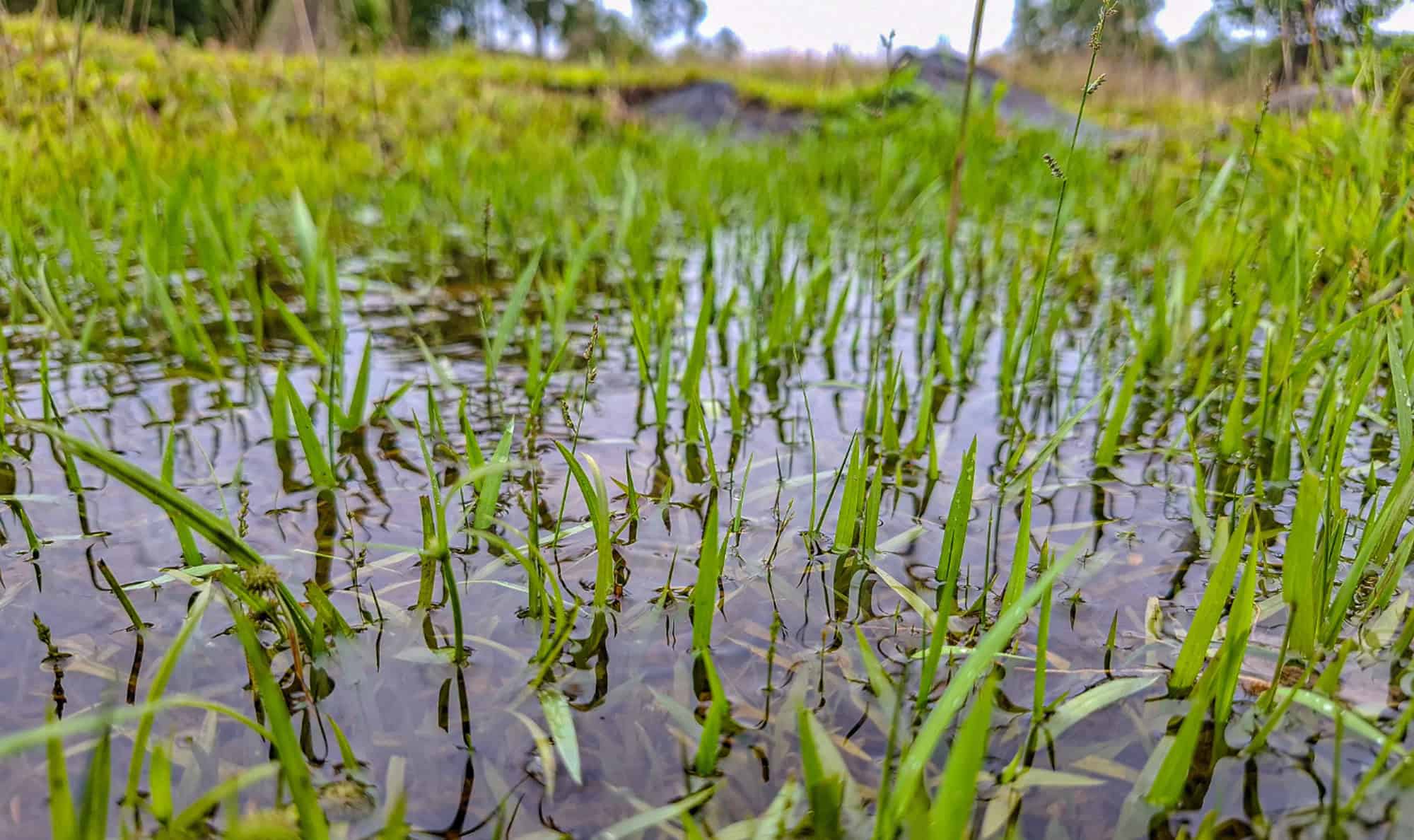

Dealing with Wet Spots in the Yard and Garden
Do you ever look at the bog in your yard and wonder, “What can I do with THAT area?”

Carla Glassman
By Carla Glassman, Skagit County WSU Extension Master Gardener
When dealing with soggy areas in your landscape, it’s essential to understand the underlying causes of the wetness and how to manage them effectively. Identifying the root issue is the first step toward improvement. Determine if the wet area is due to natural water saturation, faulty drainage, or runoff from impervious surfaces.
Some areas are just naturally wet, but to be sure, it is essential to rule out other problems like a broken sewer or water pipe. With underground issues ruled out, the next step is determining if the excess water is caused by impervious surface runoff (i.e., rooftops, sidewalks, or driveways.) If so, redirect the water to an area with better drainage.
If none of these issues are the problem, you may wonder, “Is it possible to fix it?” Often, the answer is yes. The solutions range from re-grading your yard and installing drains to working with the wet area and installing plants which grow well in wet conditions.
Some consider aggressive solutions such as adjusting the flow of the land. Doing so likely will require effort, equipment, time, and money. And possibly applying for a permit. Before moving any soil, check out the county’s Land Disturbing Activity Guide, and if necessary, call to determine if a permit is required. In Skagit County, you may need a permit for projects that:
- Exceed 100 cubic yards
- Modify drainage patterns in any way
- Has a depth or height of 3 feet or greater
You may try to “fix” the wet area by working with what you have, using less expensive or less extensive options. Soggy areas can be improved somewhat by aeration or adding compost or mulch. These improve soil structure in poorly drained soils by increasing soil aggregation. While mulch, compost, and aeration can improve overall soil health and drainage, they will not change the character of the underlying soil or the position on the landscape nor repair severely compacted or altered soil.
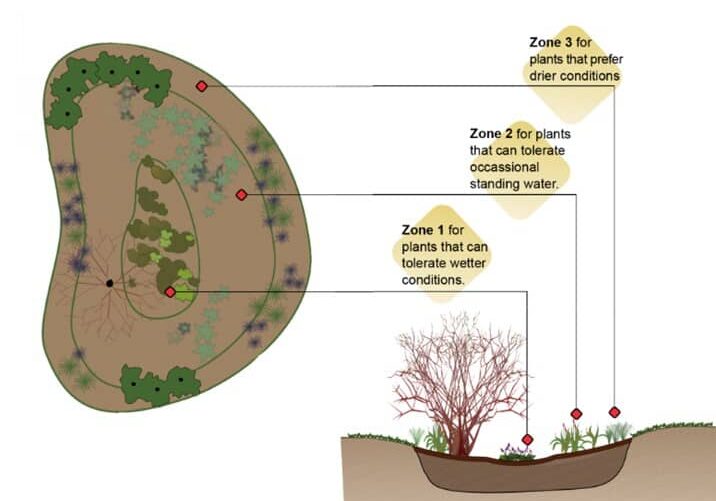
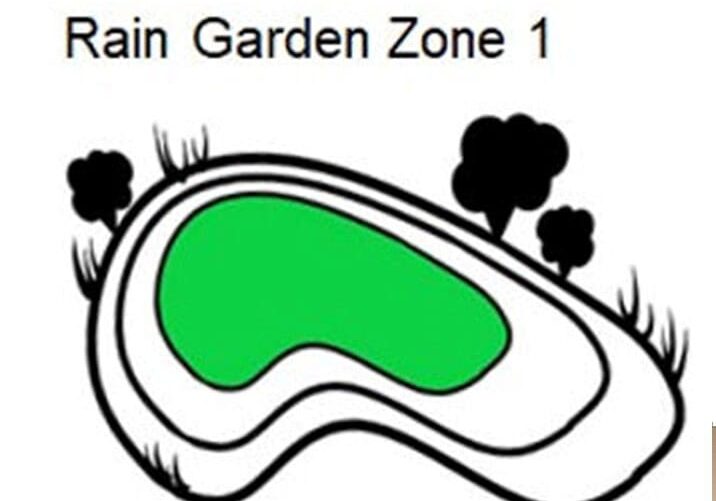
Fortunately, there is another option. There are a lot of beautiful plants that do very well in wet soils. Using the principle of “Right Plant, Right Place” or in this case “right purpose” you can install suitable plants in the area that will naturally slow runoff and allow the water to spread out.This will increase the permeability of the soil and also reduce the maintenance needs of the wet area.
Working in wet areas requires care to protect the soil. Cover bare soil with woody mulch; avoid walking or working on it when saturated. Choose plants that thrive in wet places. Landscaping in wet areas may look much like a rain garden planting when finished, because many of the same
plants will likely be happy in both places. However, installing a landscape in a wet area is different from installing a rain garden in your yard. Rain gardens are created on well-draining soils that can handle a lot of run-off directed into them. Unlike a rain garden, naturally wet areas do not have well-draining soils. They should not have additional runoff directed to them because this would cause further problems. If soil compaction or heavy soil type is part of the drainage problem, installing plants with good root structures will improve the soil structure by growing roots deeper and making pathways for the water to follow. Over time, this allows material from plants, insects, and microbes to increase the soil’s humus improving its ability to absorb water.
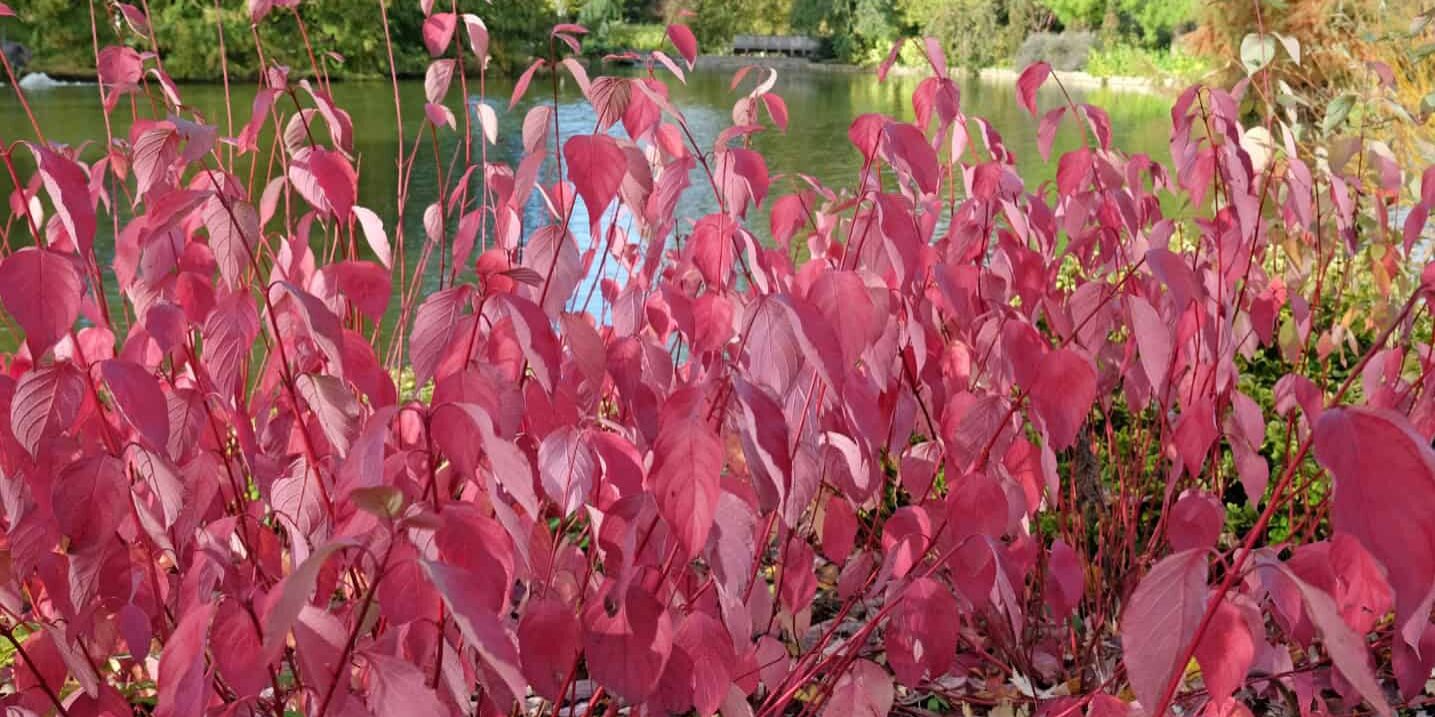
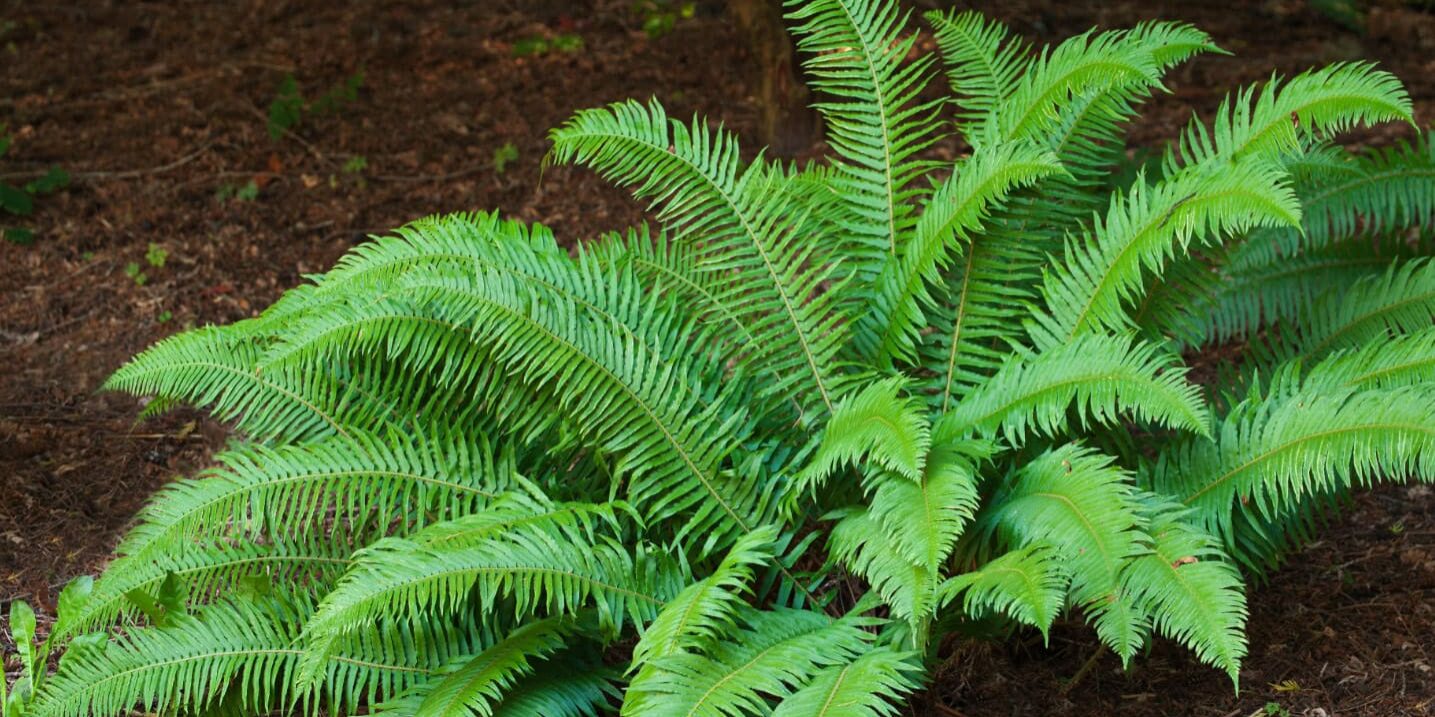
Consider Using Native Plants: Native plants are well adapted to our environment. They don’t require extra care, water, or fertilizer. More than that, wildlife depends on them and won’t survive without them. Red twig dogwood and Pacific sword fern are native and do well in moist environments.
Whether you use native plants, non-natives, or a mix, include plants of varying heights and root zones. Using varying heights and textural layers (different leaf types) is healthy for plants and wildlife and a beautiful technique. Mix various colors and textures for visual interest with a common thread that ties everything together through a consistent style.
Choosing Form and Function
Now, select plants keeping in mind the place they will be. For best results, know what your area is like during all the seasons of the year. Is your soggy spot in the sun or shade or something in between? Is it always soggy, somewhat soggy-to-damp, or does it dry out in the summer? Typically, an area will have some wetter areas, just like the zones in a rain garden.
Consider nearby physical restrictions like powerlines, underground pipes, or easements. A little planning at the beginning can save a lot of repair work in the future.
Select plants for the wet area as you would select plants for a rain garden based on the plant’s specific needs for soil type, sunlight or shade, moisture, etc. Selecting the “right plant” based on the plants needs saves time, money, and effort reducing fussing, tending, and possibly replacing later.
Zone 1 in a rain garden is the wettest area. Zone 1 plants must be able to tolerate periods of inundation (standing water.) Most rain gardens are not continually wet in Zone 1 because they are supposed to drain. They may even be totally dry for part of the summer.
Zone 2 in a rain garden is the next wettest area of a rain garden. Plants for Zone 2 are seldom inundated with water but usually damp.
Zone 3 of a rain garden is generally dry. Zone 3 plants would do well in the area whether or not there was a rain garden and may even need to be drought-tolerant. When selecting plants, choose plants that will be able to tolerate the amount of water inundation in your area. Zone 1 plants can tolerate wet conditions and seasonal flooding, so they are a good choice for your wet spot. From that group, choose plants that have the “right” light needs for your space.
Select plants depending on the degree of water inundation in your “wet” area. If your location is generally moist with seasonal wet, you might choose plants listed in the chart below suited to “Rain Garden Zone 2.” Many plants are less fussy and are able to do well in more than one zone. You may want to “hedge your bet” by selecting a variety of plants, increasing the odds of success.
Accept the challenge of wet spots in your garden as an opportunity to create a thriving ecosystem! By selecting plants that naturally filter water and develop robust root systems, you can improve the underlying soil structure while enhancing the beauty of your landscape. These resilient plants will not only thrive in the moisture but will also work to improve drainage over time, turning a soggy area into an area you can enjoy. Make the most of your garden's unique characteristics and watch it flourish!
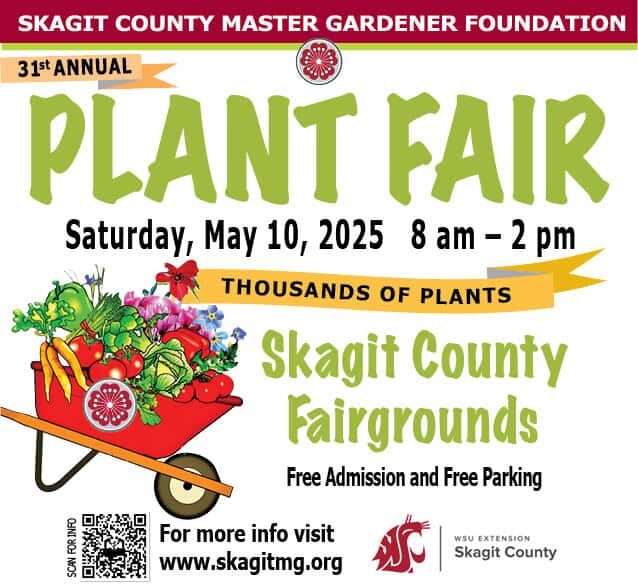
Mark Your Calendar: Always the Saturday Before Mother's Day
We're growing 3,600 tomato plants, and over 4,000 flower and vegetable starts along with edible and ornamental perennials for you to bring home and plant your garden this season.
The following list is a compilation based on information from The Washington Native Plant Society, Great Plant Picks, Missouri Botanical Garden, Native Plants PNW, USDA Plant Database, oregonflora.org, and kingcounty.gov/goNative.
* = non-native D = Deciduous E = Evergreen SE = Semi-evergreen
1@ = Tolerates seasonal flooding 2@ = Tolerates moderately wet sites 3@ = Tolerates seasonal dry
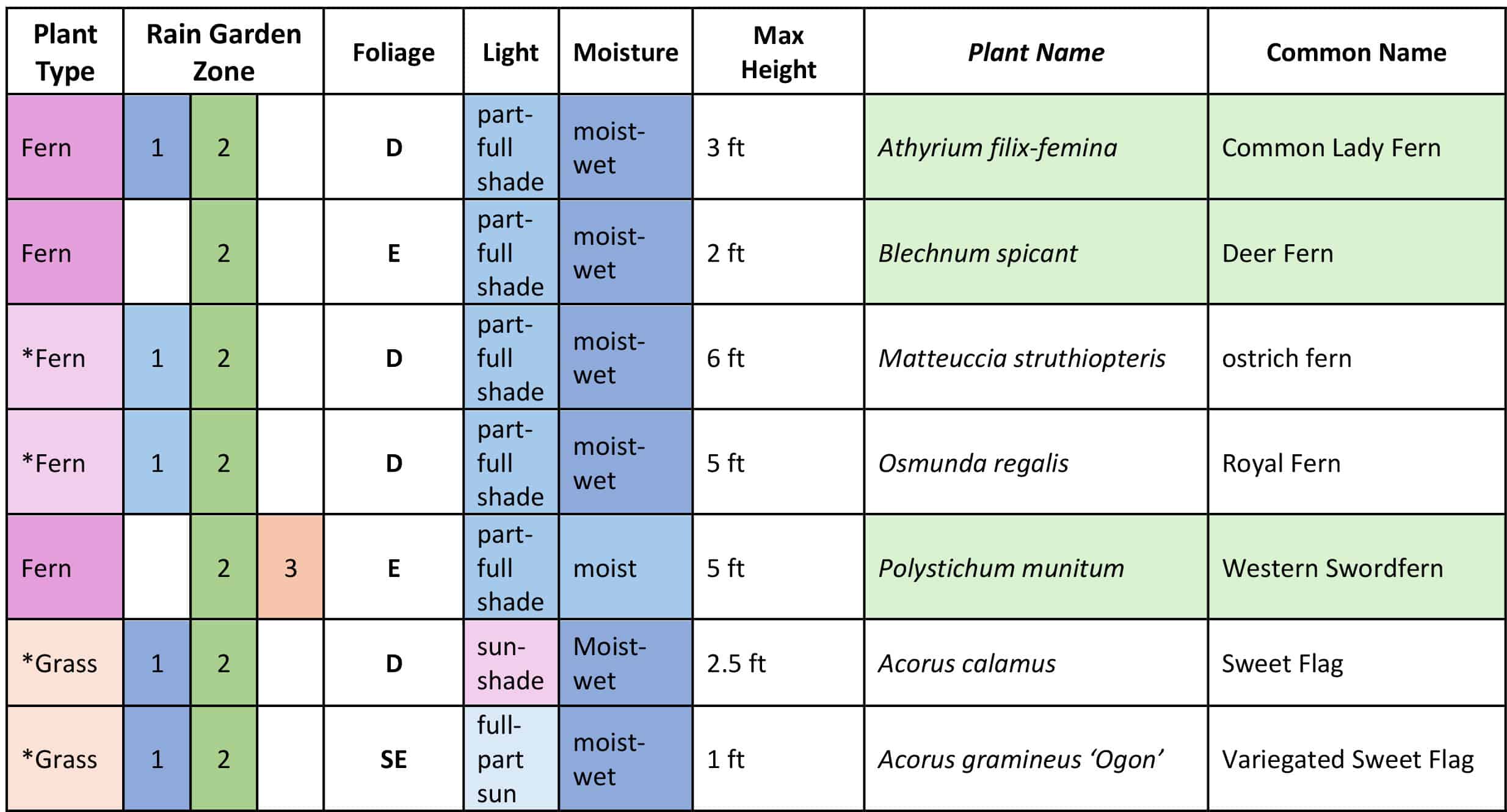
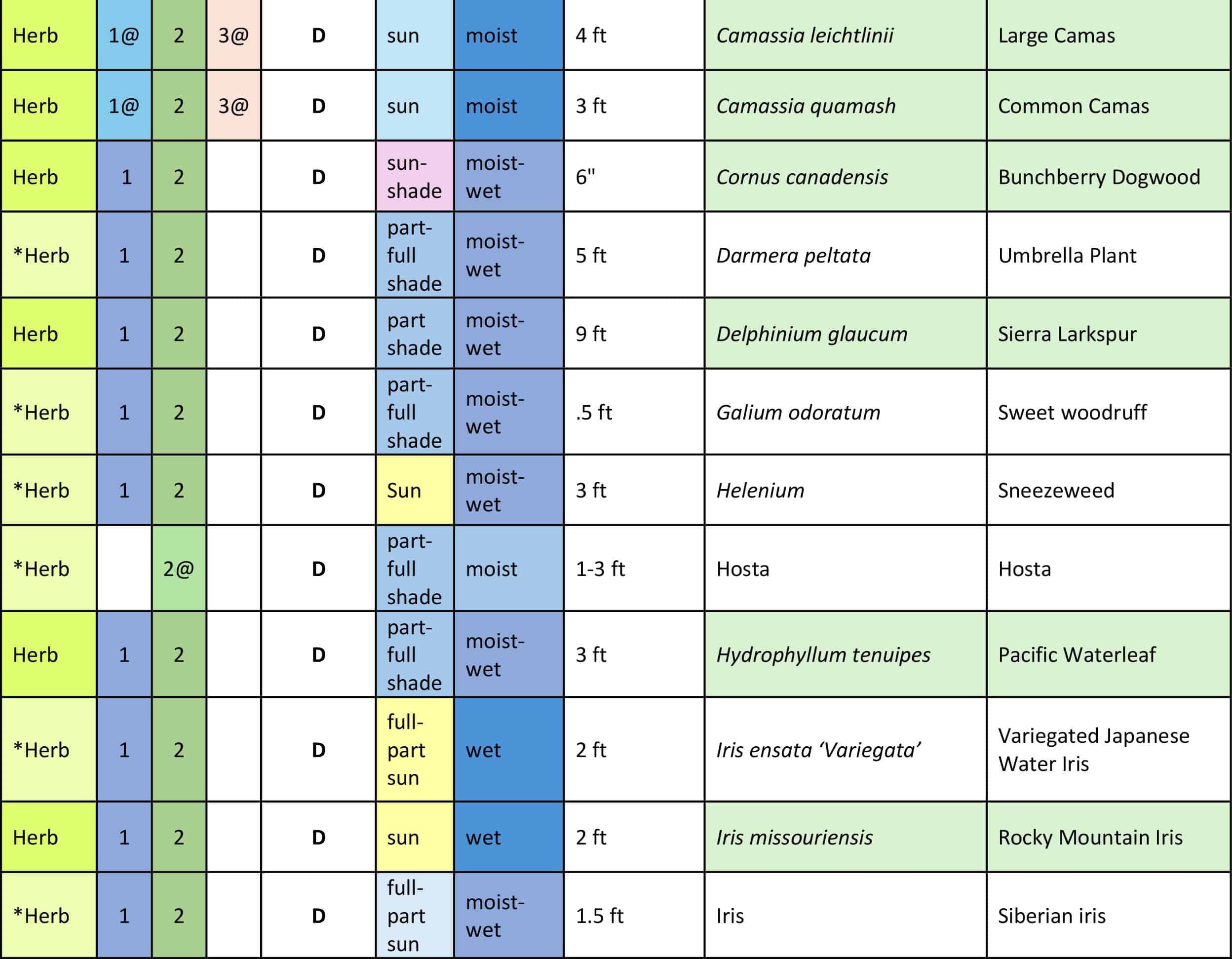
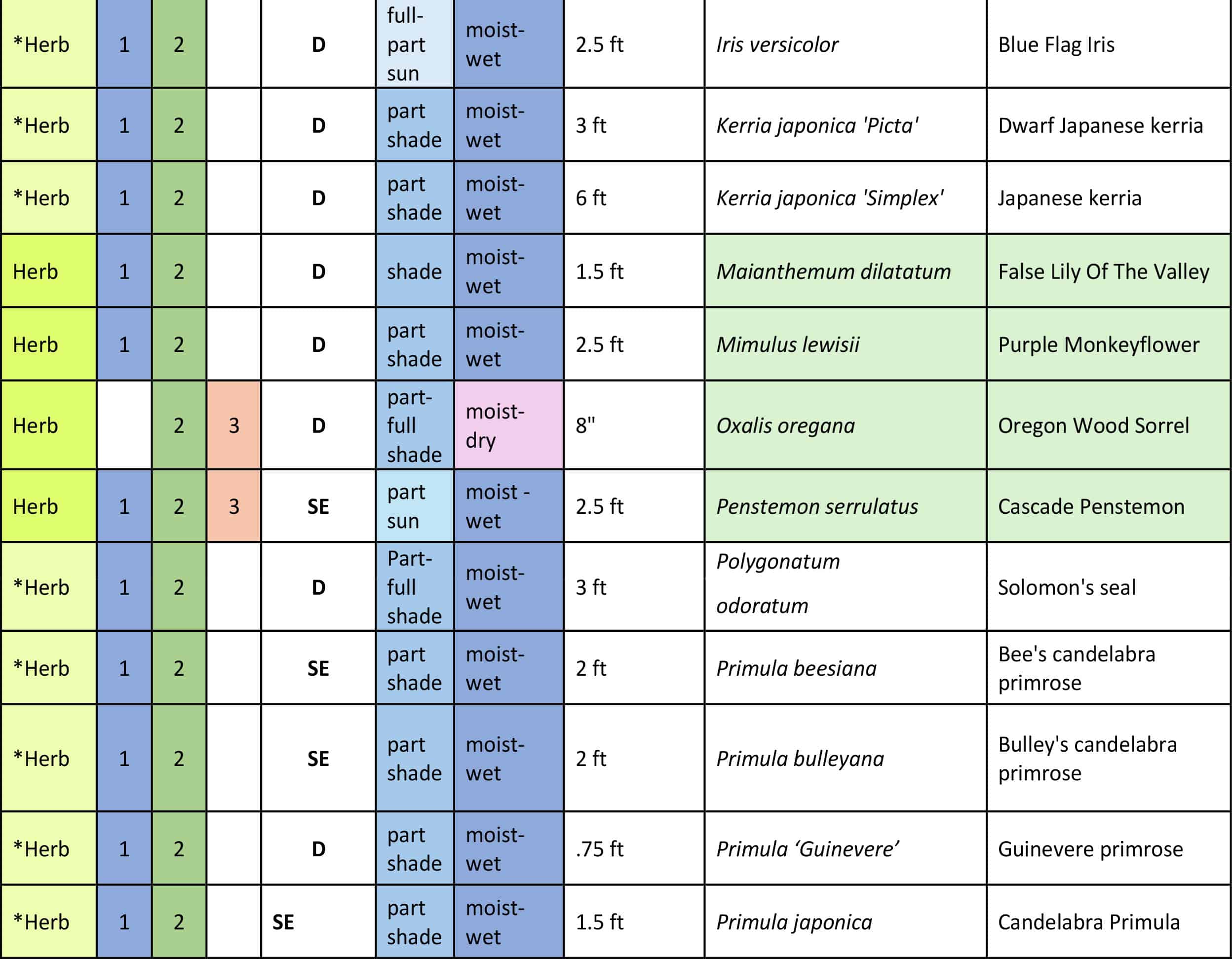
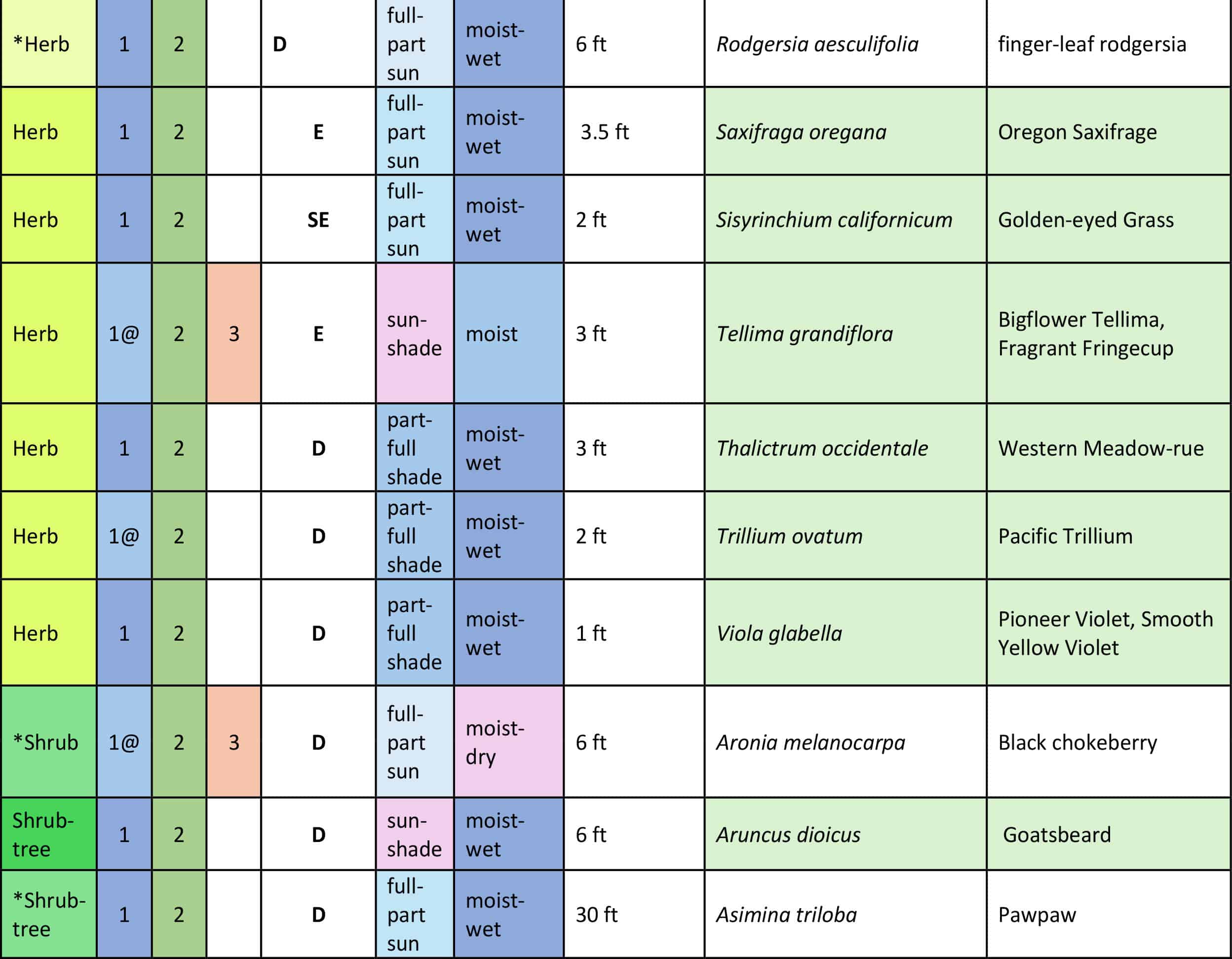
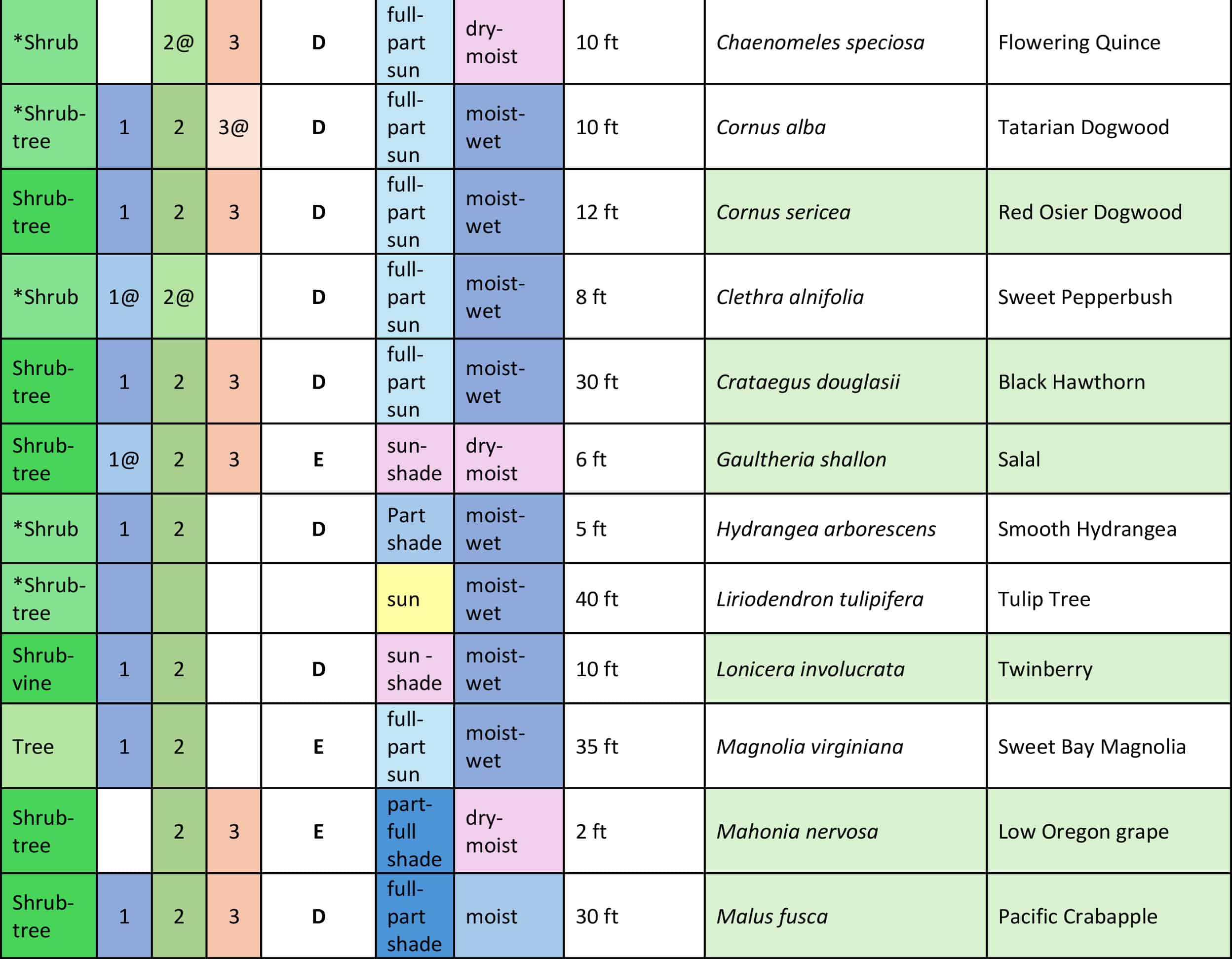
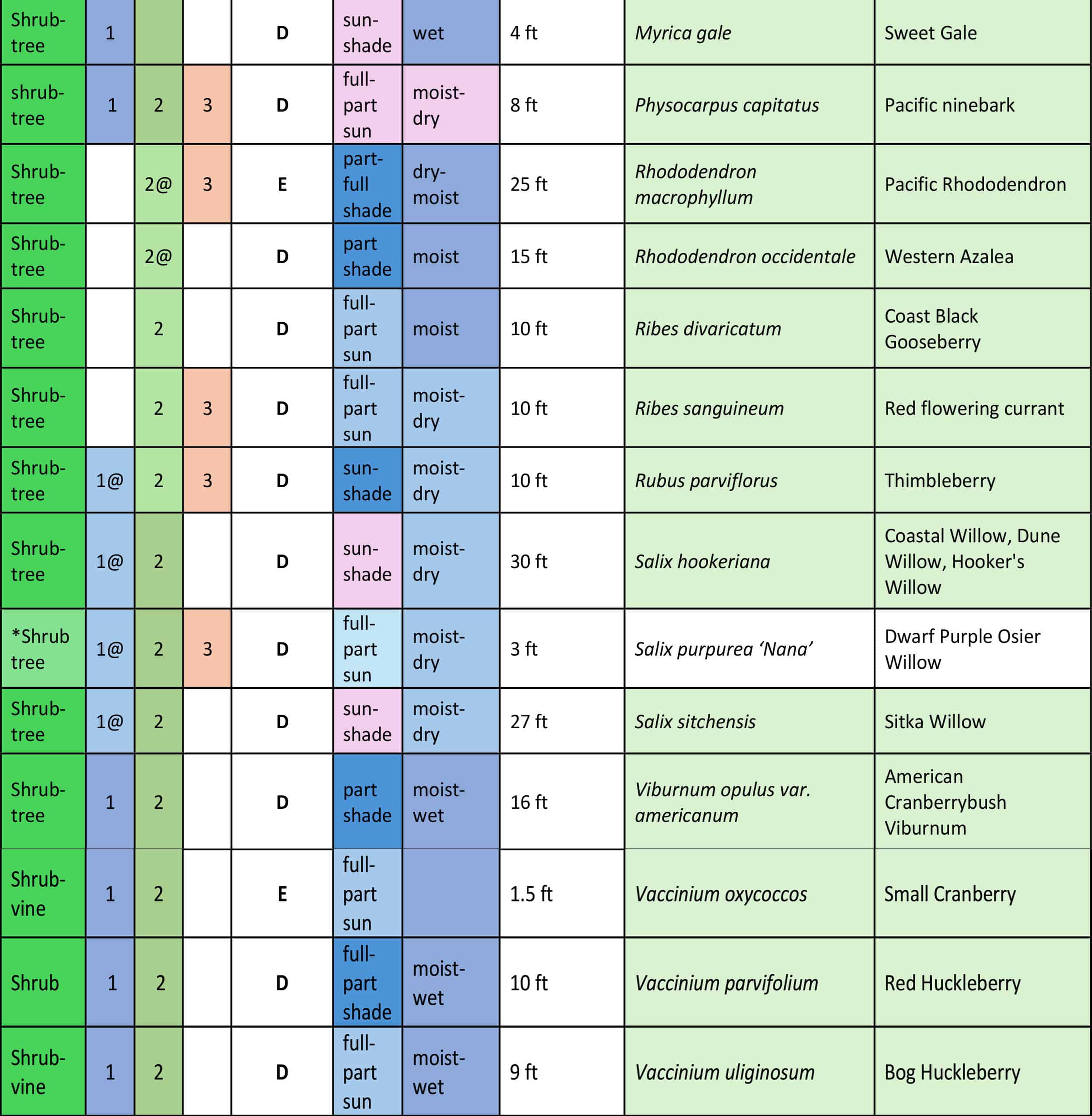
REFERENCES AND RESOURCES:
King County interactive native plant list which can be sorted by plant type, height, etc. Native Plants. King County: Retrieved at:
https://green2.kingcounty.gov/gonative/Plant.aspx?Act=list
Native landscaping plans:
Landscaping with Native Plants. King County: Retrieved at:
https://green2.kingcounty.gov/gonative/Plan.aspx?Act=list
Information on Permits. Skagit County, Washington
Retrieved at: https://www.skagitcounty.net/Departments/PlanningAndPermit/forms.htm
Testing and Improving Soil Drainage. Iowa State University Extension:
https://yardandgarden.extension.iastate.edu/how-to/testing-and-improving-soil-drainage
Don’t Just Landscape, Rainscape. Create beautiful landscapes that protect water quality and reduce runoff. Skagit County
Retrieved at: skagitcounty.net/PublicWorksSurfaceWaterManagement/Documents/Stormwater/RainScape%20Brochure.pdf
What is Humus in Soil? Explore the Critical Advantages for Your Crops. Retrieved at:
https://forestry.com/guides/what-is-humus-in-soil/
Enhancing Urban and Suburban Landscapes to Protect Pollinators. Oregon State University.
https://extension.oregonstate.edu/catalog/pub/em-9289-enhancing-urban-suburban-landscapes-protect-pollinators
From soggy to sublime: Trees, shrubs and perennials that love soggy sites. (April 2014) Retrieved at: Oregon Live.com
ABOUT THE AUTHOR:
Carla Glassman is a Skagit County WSU Extension Master Gardener, Class of 2014.
Questions about home gardening or becoming a master gardener may be directed to Skagit County WSU Extension Office, 11768 Westar Lane, Suite A, Burlington, WA 98233; by phone: 360-428-4270; or via the website: https://extension.wsu.edu/skagit/mg/
Washington State University Extension helps people develop leadership skills and use research-based knowledge to improve economic status and quality of life. Cooperating agencies: Washington State University, US Department of Agriculture, and Skagit County. Extension programs and policies are available to all without discrimination. To request disability accommodations contact us at least ten days in advance.
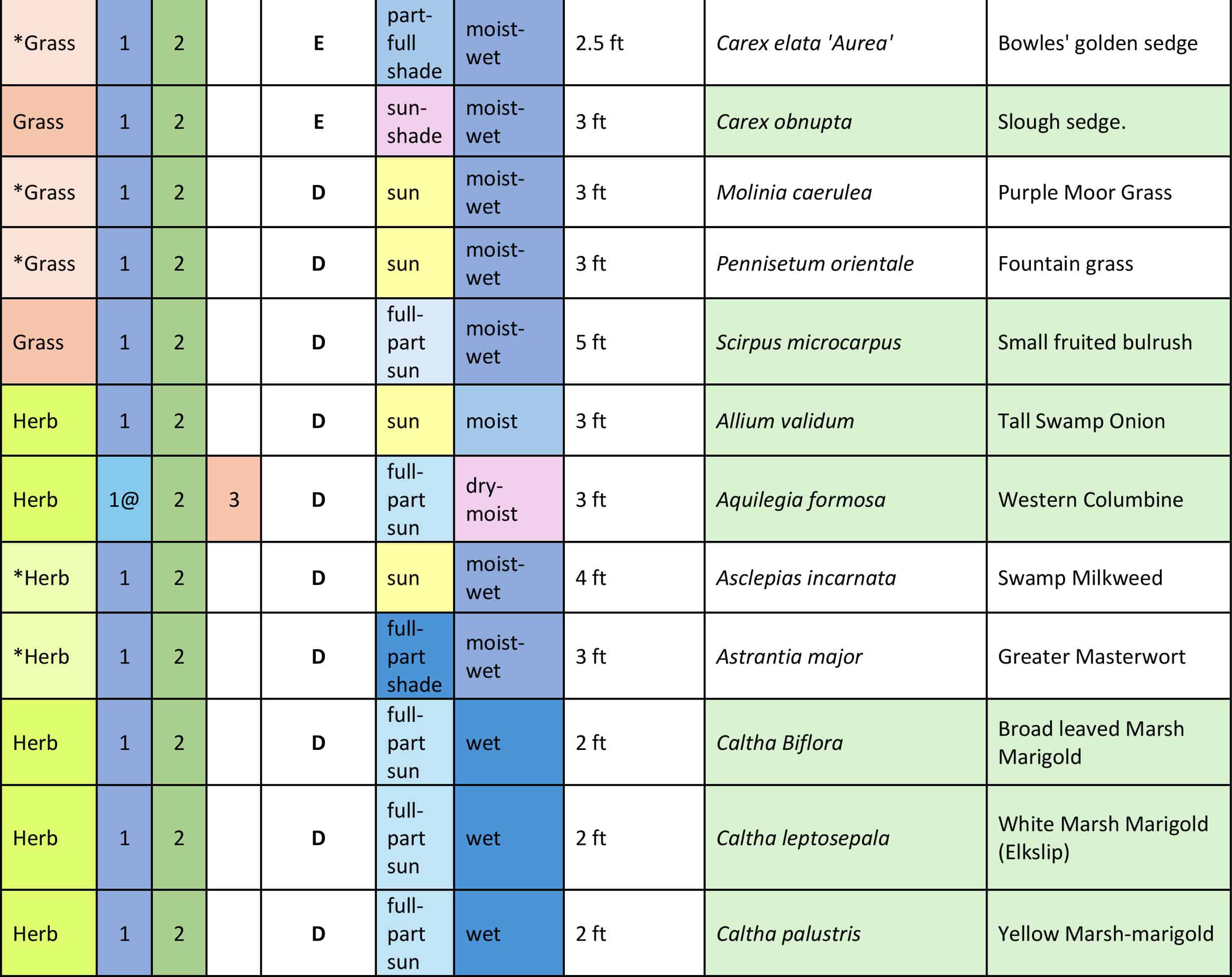
Excellent information, thank you, Carla!
Cathy Vink
SCMG Class of 2024
Thank you Carla. A comprehensive, understandable article for this type of “problem” area. I also enjoyed the extensive list of plants with their preferred growing zone.
Carol Butz
SCMG class of 2011
Thank you Carla. Makes me wish I had a “wet” area!
You can download the 2024 Rain Garden Handbook for Western WA at this link https://www.stormwater.com/green-infrastructure/article/53095572/new-rain-garden-guide-released-for-western-washington